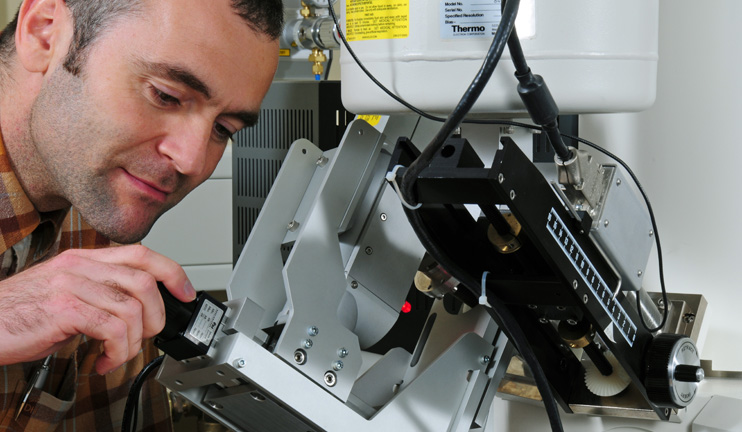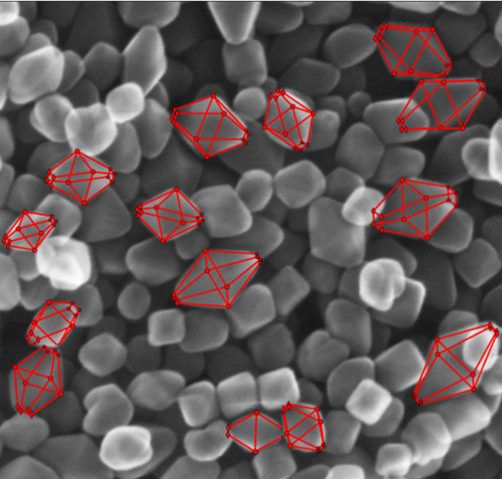
Dr. Vasile-Dan Hodoroaba working with a scanning electron microscope (SEM).
Source: BAM
Tiny nanoparticles are increasingly present in many products: they are used to make sun-cream, toothpaste and concrete flow better, and they are contained in coated surfaces for solar panels, or in medical contrast agents. Previously, apart from food, only cosmetics needed to be labelled across the EU if they contained particles below 100 nanometres. This is because it has not yet been conclusively clarified whether nanoparticles are really non-hazardous for people and the environment.
This question needs to be answered by toxicologists in individual cases. However, in order to conduct their analysis, they need information about the composition of nanoparticles. Dr. Wolfgang Unger and his colleague Dr. Vasile-Dan Hodoroaba from the Surface Analysis and Interfacial Chemistry Division are researching how nanoparticles can be characterised.
BAM is optimising analysis techniques
Dr. Hodoroaba places nanoparticles on a thin membrane, which is permeable for electrons, and fires a focussed electron beam at them. The advantage of this mode of transmission or TSEM is that the radiation permeates the samples and membrane, meaning that the internal structure of individual nanoparticles can be defined in addition to the conventional surface morphology on a SEM. Nanoparticles can be hollow, solid or porous inside. It is also possible to have core-shell nanoparticles or binding materials from two or more components.
BAM researchers are working on various techniques to be able to automatically measure and analyse not only individual nanoparticles but a large quantity. The scientists want to go another step further in future: they want to be able to use X-ray spectroscopy to research the chemical composition of the nanoparticles. They could already detect elements like carbon, oxygen or titanium in individual nanoparticles. Further research is required, however, to establish a standardised technique available to every analytical laboratory.

Von der BAM sichtbar gemacht: Titandioxid-Nanopartikel in Hochleistungssolarzellen mit bi-pyramidaler Form
Source: BAM
Reference techniques and standardisation
BAM is not only developing and optimising analysis techniques, but is also providing reference materials. Companies will benefit from this as well, since they will be able to demonstrate precisely the size and quantity of nanoparticles in their products. In addition, BAM is participating in the development and definition of European and international standards (ISO) with the support of DIN. Clear rules and the harmonisation of nano-standards will provide authorities and consumer protection groups the basis for analysis, warnings and labelling requirements.
In this way, BAM is helping various interest groups to be able to better assess the safety and risks of products containing nanomaterial.


